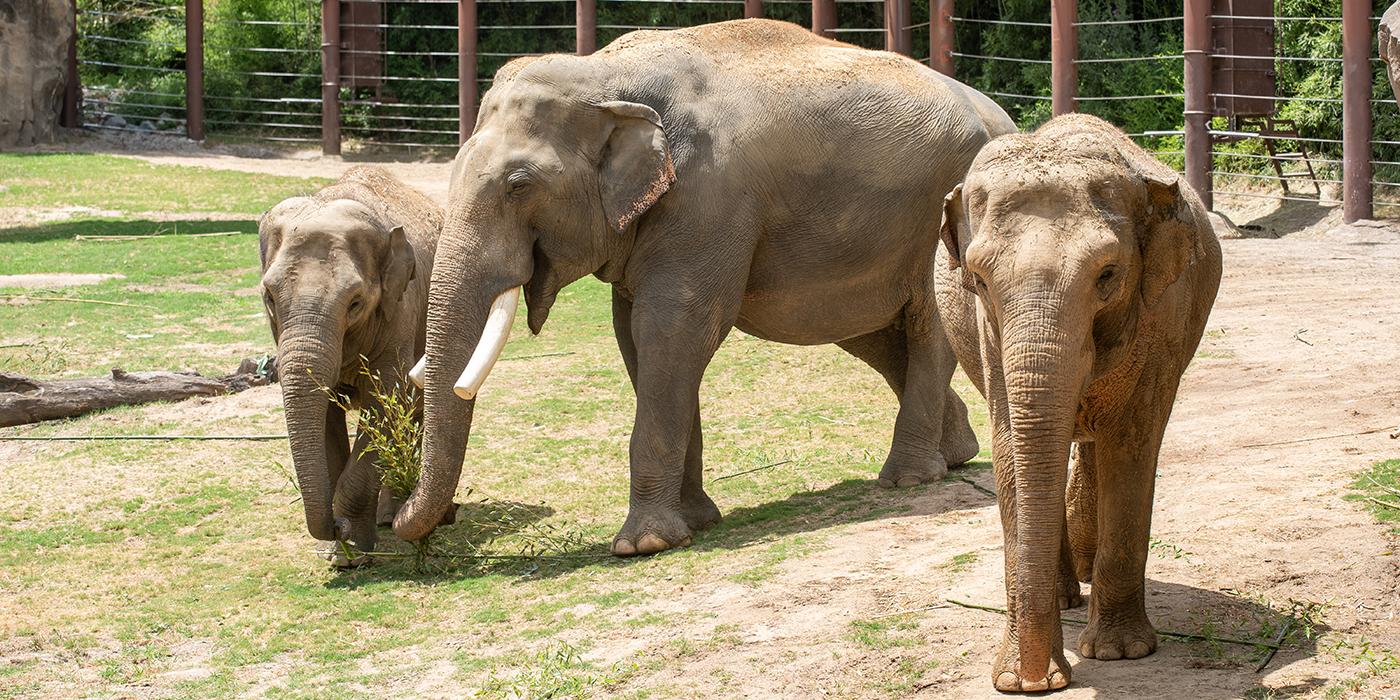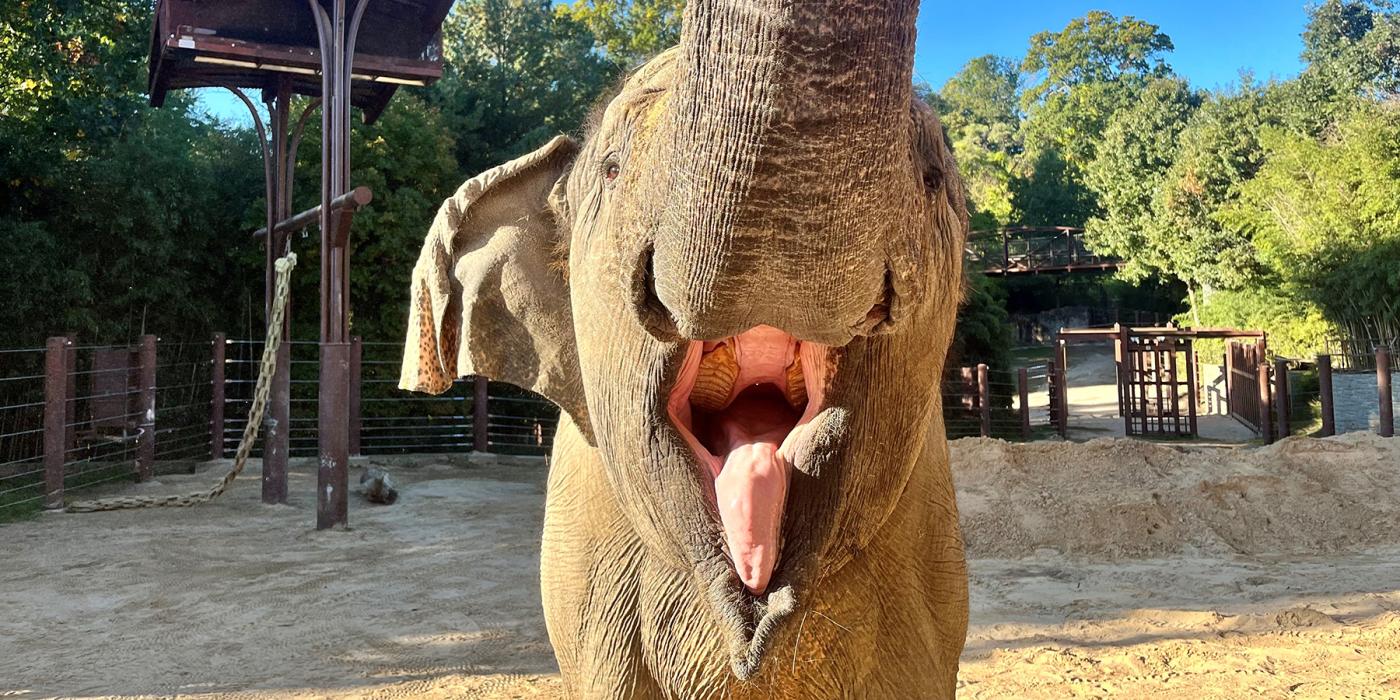Meet Our Asian Elephant Mother-Daughter Duo
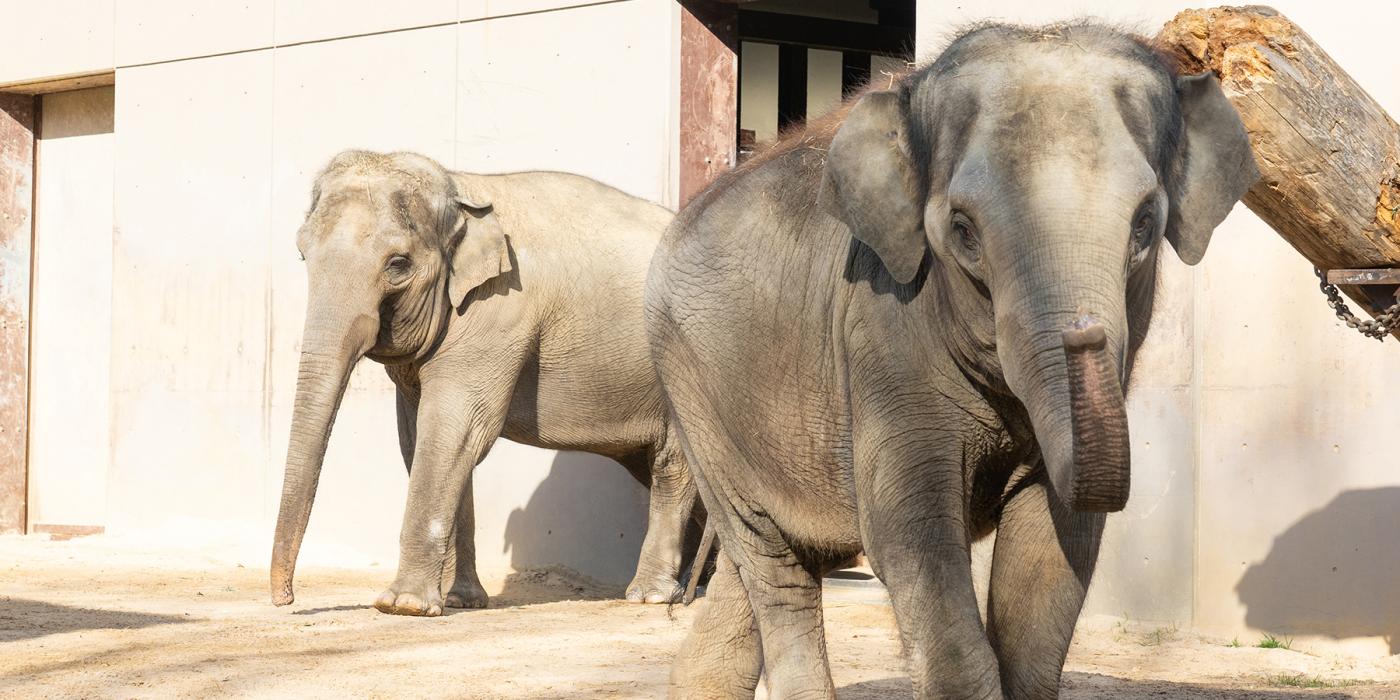
Let’s get ready to rumble, trumpet and stomp!
Asian elephants Trong Nhi (left) and her daughter Nhi Linh (right) arrived at the Zoo Nov. 6, 2022. Last month, they made their grand debut! Trong Nhi is slightly larger in size than Nhi Linh, and she has a blunter trunk tip. Nhi Linh is smaller with big eyes, lots of hair and a very pointed trunk tip.
Ever since Asian elephants Trong Nhi and Nhi Linh made their debut at the Elephant Trails habitat, they have been busy building relationships with their keepers and herd members. Get to know the Smithsonian’s National Zoo and Conservation Biology Institute’s new elephants in this Q+A with curator Tony Barthel and keepers Rebecca Riley and Robbie Clark.
What’s one of your favorite facts about elephants?
Tony: Elephants are social animals. They put a lot of effort into building and maintaining their relationships. This means that not only do they have to think about themselves, but also they have to think about themselves in context of others, as well.
Asian elephants have amazing minds that are capable of complex thought, planning, tool use and so much more. It’s easy for people to assume that because elephants are social and intelligent, they must be just like us. But they’re not. These animals have their own unique outlook on the world around them, based on their life experiences.
Why did Trong Nhi and Nhi Linh come to the Zoo?
Tony: We received a recommendation to breed Trong Nhi and Nhi Linh with our bull, Spike, from the Association of Zoos and Aquariums’ Species Survival Plan.
It has been 22 years since our last calf, Kandula, was born. Everyone here at the Zoo wants to see us be successful in our efforts to breed Asian elephants and help sustain the Asian elephant population in North America and around the world. Trong Nhi and Nhi Linh represent a real hope in that effort.
We’re excited for the opportunity to get to know Trong Nhi and Nhi Linh and see how the relationships they form with us and their new herd members develop over time.

How are the elephants adjusting to their new home?
Tony: Trong Nhi and Nhi Linh are doing well and acclimating to their new habitat and routine.
Rebecca: These two have a very strong mother-daughter bond. They are affectionate toward each other and sleep together. At 9 years old, Nhi Linh is approaching breeding age. We have seen behaviors that indicate she’s ready for some independence. However, mom doesn’t seem ready for that to happen. Trong Nhi has strong maternal instincts and is very protective of her daughter.
What is Nhi Linh’s personality like?
Robbie: Moving to a new home can be daunting, but Nhi Linh has been brave, resilient and ready for challenges! Given her young age, I would have expected her to be hesitant about new experiences and activities. Lucky for us, Nhi Linh is proving to be an inquisitive, eager and fast learner.
I have really enjoyed building the foundations of a positive relationship with Nhi Linh. This is a critical step in setting her up for a healthy and active life at the Zoo, as it is the basis for our positive reinforcement training program. We’re teaching her complex husbandry and medical behaviors that allow us to closely monitor her vitals and provide her with the best possible care.
Her participation is voluntary, and we reward her with lots of praise and some tasty treats when she does the correct behavior. Considering the short time we have known her, I appreciate the trust she has placed in our team. I’m happy to share that on Dec. 26 and Jan. 3, Nhi Linh voluntarily participated in a blood draw procedure!
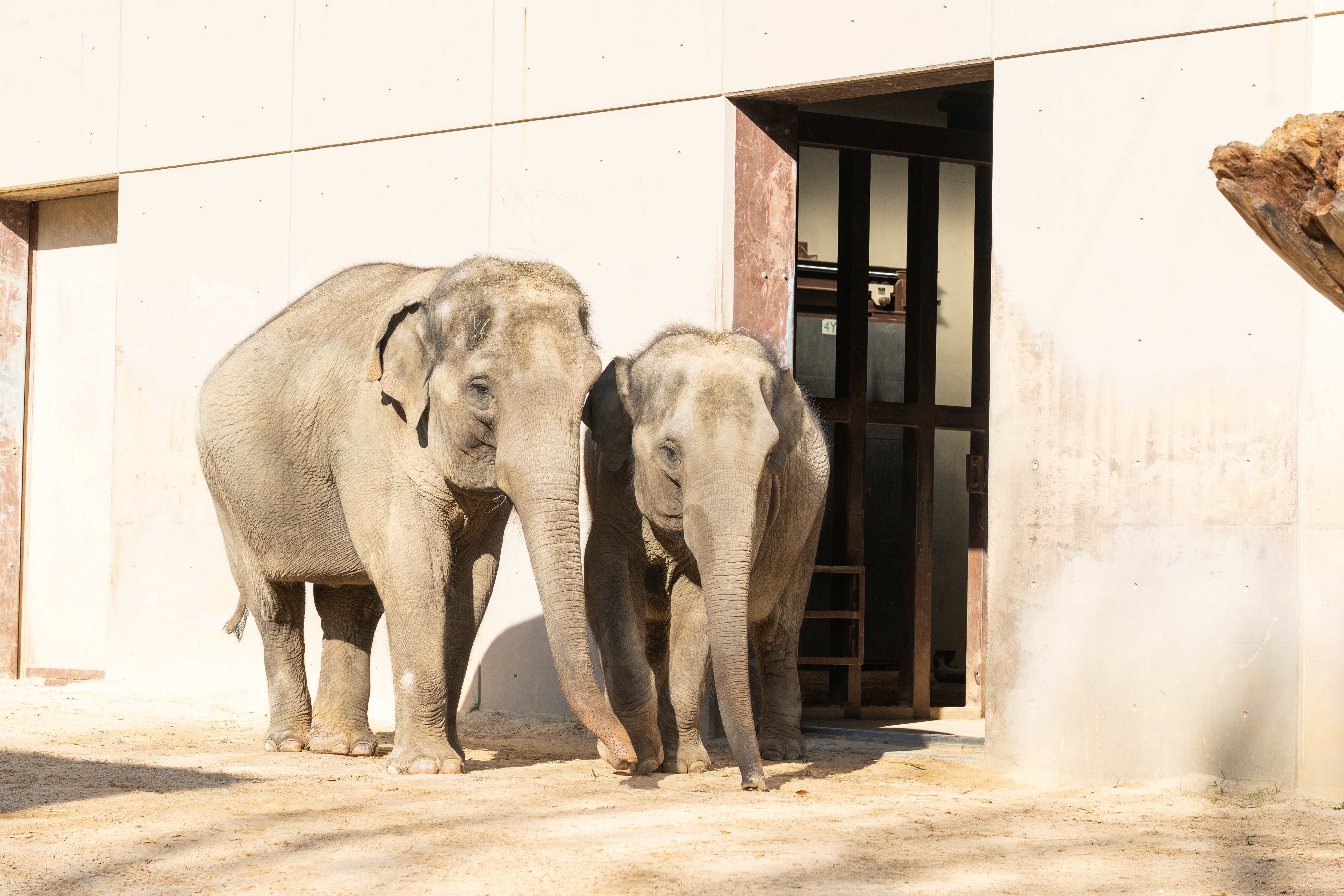
What do you enjoy most about working with Trong Nhi?
Rebecca: She is even-tempered and pretty relaxed, calm and easy-going. I really enjoy helping Trong Nhi find success in each training session. Some of the behavioral cues we use vary slightly from those she learned at Rotterdam Zoo, but she quickly figured out what we were asking her to do.
What are their favorite foods?
Rebecca: To give our elephants some mental and physical exercise, we put their grain inside a cube-shaped puzzle feeder that has a small hole in one side. To access the food, the elephants use their trunks to turn, flip and spin the feeder. They both seem to enjoy the challenge of knocking the grain out. In a similar vein, Trong Nhi recently showed us just how clever she is by modifying a hay net so that the opening was larger and easier to eat from!
In terms of her favorite foods, Trong Nhi really likes bananas and whole apples. We save those items as jackpot rewards for mastering training behaviors that are especially complex.
Robbie: Nhi Linh has proven to be a picky eater. She eats both fruits and vegetables, but the sweeter the food, the more valuable it seems to be to her. Nhi Linh especially likes strawberries, pineapple and peanut butter bread.
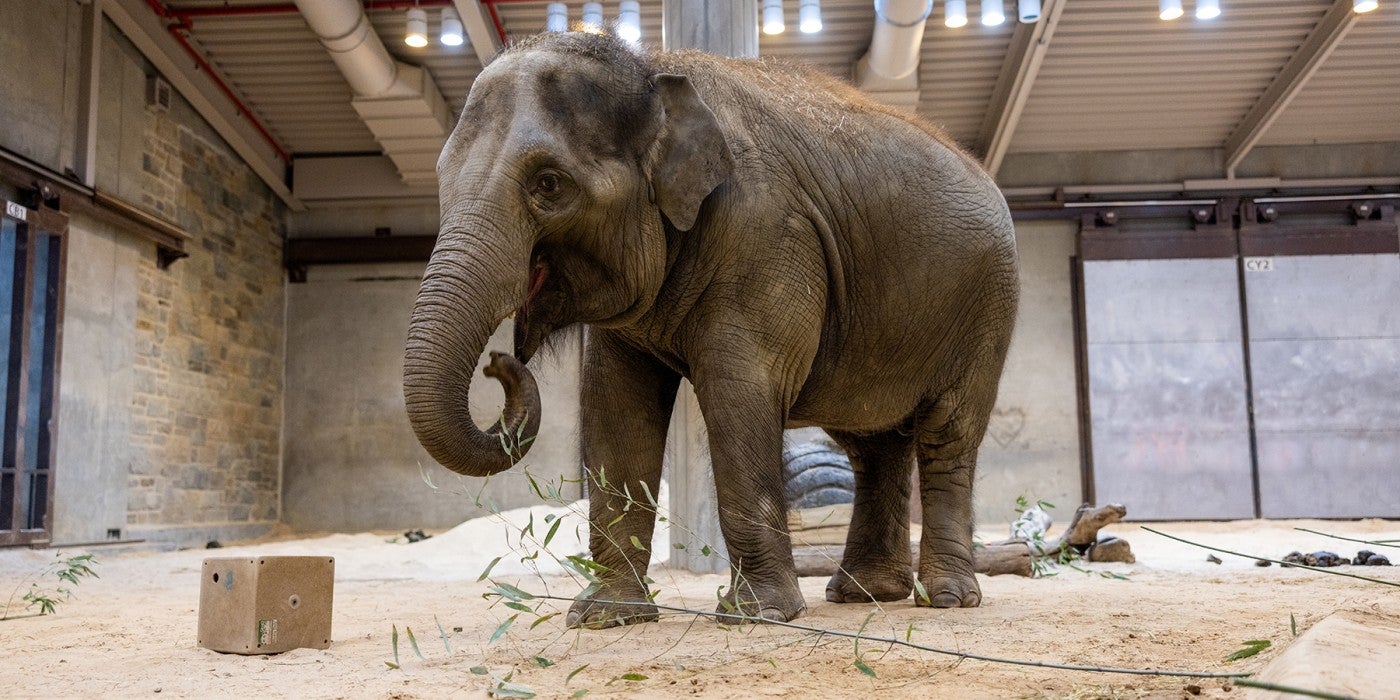
What is the process for introducing them to their new herd members?
Tony: At first, Trong Nhi and Nhi Linh were able to see, smell and interact with Spike, Maharani, Bozie, Kamala and Swarna from a distance. Next, we moved to “howdy” introductions with Spike, which allow the elephants to interact with one another with a safety barrier in between.
During these intros, we pay close attention to their body positioning and vocalizations. We look for an increase in affiliative behaviors, such as touching and sharing food, and a decrease in behaviors we consider aggressive, such as charging and trunk throwing. Their behavioral cues help our team determine everyone’s level of comfort before we dive in to face-to-face introductions.
Initial introductions between Spike, Trong Nhi and Nhi Linh went well. They had a successful face-to-face introduction recently, and the three of them routinely have “howdy” access to further build their relationship. Once Trong Nhi and Nhi Linh are fully settled in, we’ll introduce them to Bozie, Maharani, Kamala and Swarna.
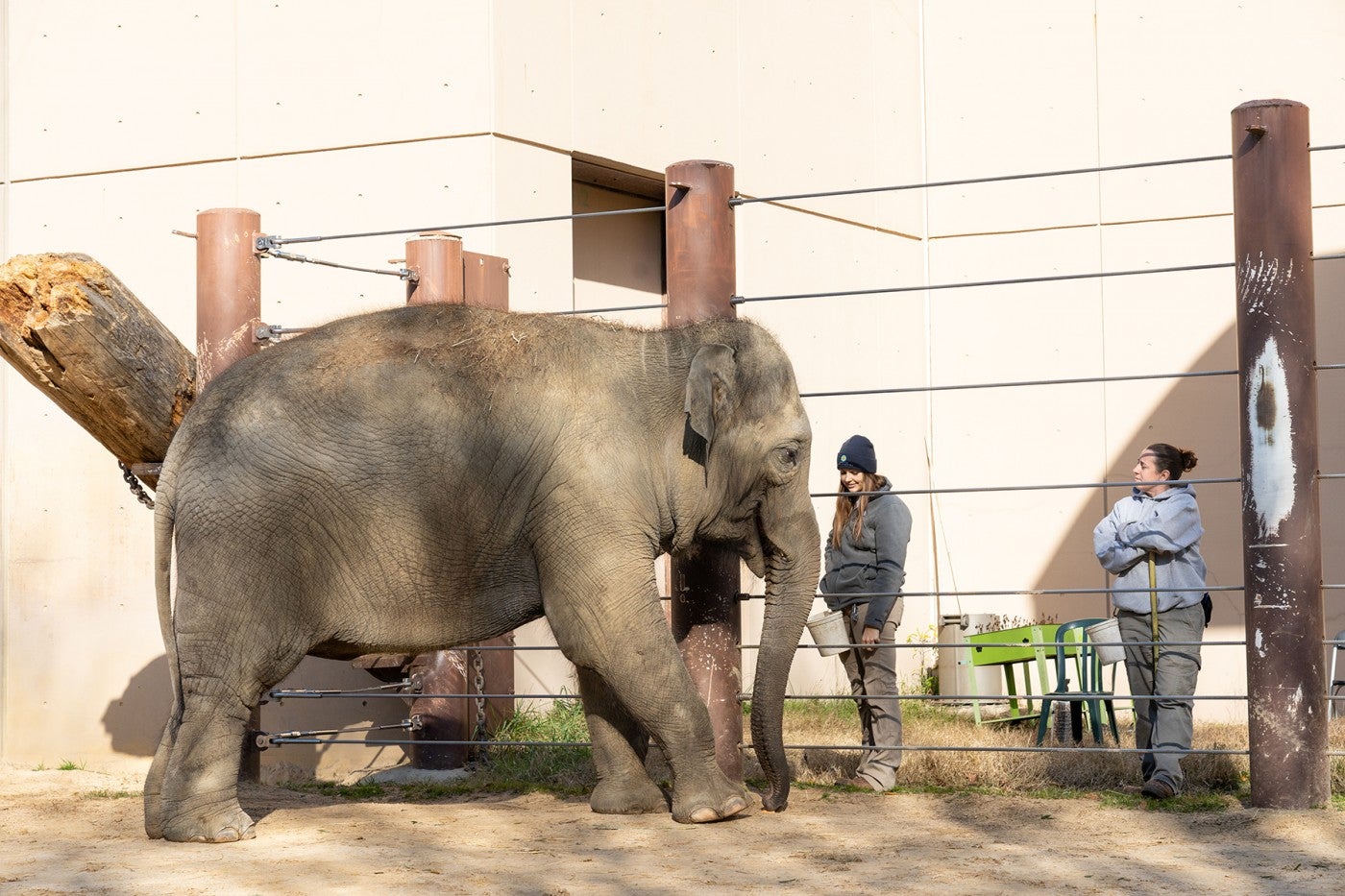
I want to help Asian elephants! What can I do?
Rebecca: Asian elephants are considered endangered by the International Union of Conservation of Nature due to habitat loss, human population growth and poaching. As the available space in their native habitat shrinks, the risk of human-elephant conflict increases.
You can help Asian Elephants at home by supporting organizations that set aside space for elephants in their natural habitats and by buying products that are sustainably sourced or recycled to lessen our impact on habitat loss.
This story appears in the January 2023 issue of National Zoo News. Curious to learn more about how our team cares for these gentle giants? Check out Rebecca’s How To Care For Asian Elephants blog! Then, take a virtual field trip with Smithsonian’s National Zoo and Conservation Biology Institute scientists as they work with partners to save Asian elephants in Myanmar.
Related Species:

